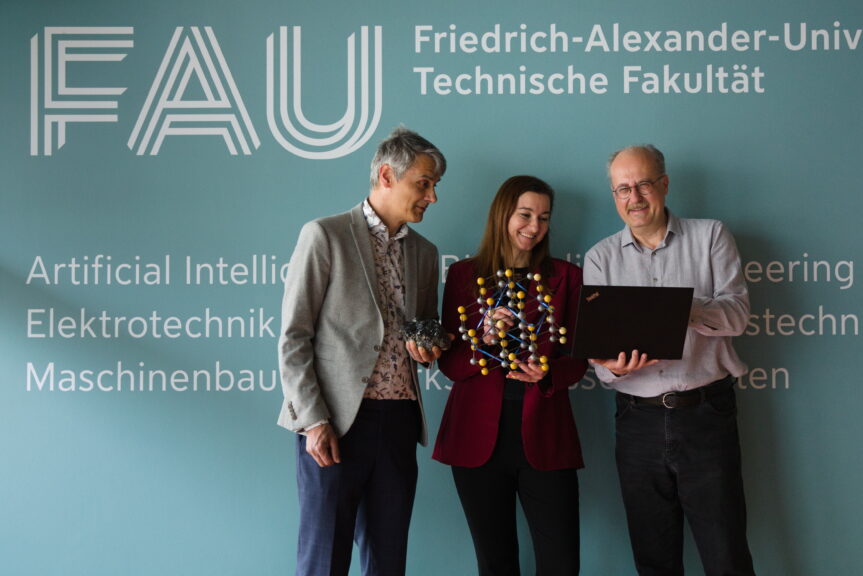What makes a semiconductor truly defect-tolerant—and could this lead to lead-free perovskite solar cells?
In a recent review article, researchers from the FAU Profile Center Solar summarize key criteria for defect tolerance in semiconductors, providing guidance for the search for environmentally friendly materials for thin-film solar cells.
Perovskite solar cells are considered a game changer due to their high efficiency, intrinsic defect tolerance, and low-cost processing. However, the most promising materials still contain lead. Understanding which structural and electronic properties enable defect tolerance is therefore crucial for future sustainable photovoltaics.
The review is the result of a collaboration among FAU Solar members, combining expertise in materials science, defect characterization, and computational chemistry to establish a consistent picture of defect tolerance. It outlines promising candidate materials and highlights open challenges, paving the way for lead-free, eco-friendly solar technologies.
Energie-Campus Nürnberg (EnCN)
Geschäftsstelle Energie Campus Nürnberg
Studiendekan III (Studierendeninformation und -beratung)Department of Materials Science and Engineering
Chair of Materials for Electronics and Energy Technology
Department of Chemistry and Pharmacy
Professor of Computational Chemistry (Prof. Dr. Meyer)
Department of Materials Science and Engineering
Chair of Materials for Electronics and Energy Technology

What makes a semiconductor truly defect-tolerant—and could this lead to lead-free perovskite solar cells?
In a recent review article, researchers from the FAU Profile Center Solar summarize key criteria for defect tolerance in semiconductors, providing guidance for the search for environmentally friendly materials for thin-film solar cells.
Perovskite solar cells are considered a game changer due to their high efficiency, intrinsic defect tolerance, and low-cost processing. However, the most promising materials still contain lead. Understanding which structural and electronic properties enable defect tolerance is therefore crucial for future sustainable photovoltaics.
The review is the result of a collaboration among FAU Solar members, combining expertise in materials science, defect characterization, and computational chemistry to establish a consistent picture of defect tolerance. It outlines promising candidate materials and highlights open challenges, paving the way for lead-free, eco-friendly solar technologies.
Dr. rer. nat. Maria Hammer
Energie-Campus Nürnberg (EnCN)
Geschäftsstelle Energie Campus Nürnberg
Prof. Dr. Wolfgang Heiß
Department of Materials Science and Engineering
Chair of Materials for Electronics and Energy Technology
Prof. Dr. Bernd Meyer
Department of Chemistry and Pharmacy
Professor of Computational Chemistry (Prof. Dr. Meyer)
Prof. Dr. Christoph J. Brabec
Department of Materials Science and Engineering
Chair of Materials for Electronics and Energy Technology